Producers are successfully turning their hand both to international varieties and more interestingly, to central European ones like Frankovka (Blaufrankisch), Svatovavrineck (St Laurent), Veltlinske Zelene (Grüner Veltiner) and Riesling Vlassky (Welschriesling).
“If anyone says try Czech wine, just walk away: stick with the beer,” said my American friend, resident in Prague for almost 25 years now.
Daniel’s view is fairly commonplace, although in fact it was actually mainly Moravian wine he was talking about, for 90% of the country’s wine comes from this south-eastern region. The most interesting wines – generally small production – are scarce and don’t sit happily with the commercialisation that has swept most parts of the Czech capital.
Czech wines may only account for 0.22% of the global total, with most of this drunk at home, but make no mistake, there are interesting things happening here. After years of Communist and post-Communist stagnation and then wine-making conformity, producers are on a roll, particularly those located around and to the south of the Moravian capital of Brno, right down to the Austrian border.
“The wine industry has developed enormously over the last ten years. Massive investments have been made in wine processing technologies and now most wineries are very well equipped with technology. Another trend is the entry of investors from the ranks of successful entrepreneurs from other sectors,” says Vlastimil Valenta, chairman of BV Vinarstvi, a producer founded just eight years ago and focused on single varietal wines grown only in BV’s own vineyards.

Jiri Šebela: a new revolution in wine
According to Jiri Šebela, owner and head winemaker at Dva Duby winery, the big change came around 2007 when winemakers started taking concepts like terroir, low intervention and organic more seriously after years of focusing more on just getting the basics right.
“In a globalised world it’s hard to find something unique. But Czech wines today have remarkable diversity with every winery producing from at least five grape varieties (and sometimes even 20) whilst towns, villages and the landscape change every ten kilometers or so. There’s a lot to explore.”
Importers agree. At one of last year’s London Press Tastings for the Wine Society, the natural wines of Tomas Cacik (a Rulandske Bile and a Svatovavrineke) were very well received, with tasters remarking at the low intervention wine-making and fresh acidity which made them stand out from the crowd. At just 11% alcohol, the Svatovavrineke (St Laurent) was quite delicious and fully in keeping with the current zeitgeist for lower alcohol wines.
Seeing a good business opening, Zainab Majerikova, a former sommelier and her husband Jiri Majerik set up Basket Press Wines, a UK-based agency specialising in Moravian wines three years ago, with the focus on mainly family-owned producers (typically 40-50,000 bottles a year) making organic and biodynamic, low intervention wines.
“There is real energy and drive, particularly amongst small and family producers, who are making really expressive, low yield wines,” Majerikova says, suggesting the UK response has been impressive, especially amongst sommeliers and consumers who appreciate authentic wine with a strong sense of place.
Producers agree this is the growth area, particularly at the medium sized or boutique end of the market where there is increasing focus on quality and authenticity, encouraged by healthy domestic demand.
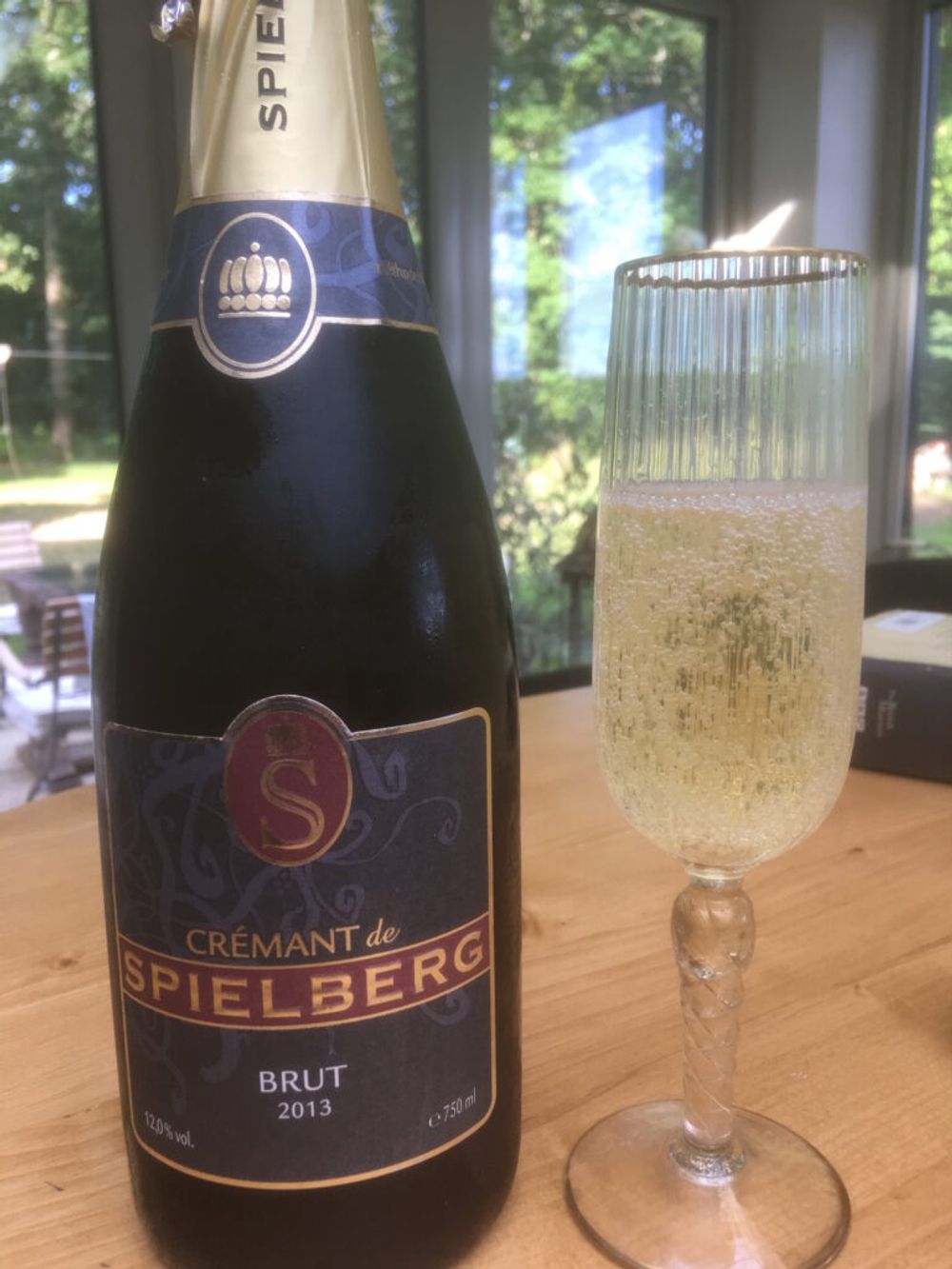
Spielberg: a new producer using old-style techniques
“The Czech wine industry made a huge step forward, thanks to young progressive oenologists who – following the example of their foreign colleagues – gained valuable experience in prestigious wine regions,” says Martin Lehecka, head sommelier at Spielberg, a relatively new producer focused on the on-trade and growing much of its grapes in the prized Austerlitz region where “we practise centuries-old methods such as maceration in open vats combined with trampling grapes, spontaneous fermentation, non-filtering of wines and minimal use of sulphur.”
Lehecka says there remains a big gap between his kind of producer and the more conventional type, focused on producing uncomplicated semi-dry/ semi-sweet wines from a whole range of varieties and grapes of various origins.
”Their market position is still very strong. It is this diversity of styles along with the number of cultivated varieties that distinguishes the Czech Republic and makes it unique.“
Both types of producer are successfully turning their hand both to international varieties and more interestingly, to central European ones like Frankovka (Blaufrankisch), Svatovavrineck (St Laurent), Veltlinske Zelene (Grüner Veltiner) and Riesling Vlassky (Welschriesling), which now has its own appellation with several winemakers specialising in it. Local rarities like Floriana and Palava, a 1953 crossing between Müller-Thurgau and Gewürztraminer, round out the picture, alongside widespread use of hybrids (Hibernal, Cabernet Cortis and Andre).
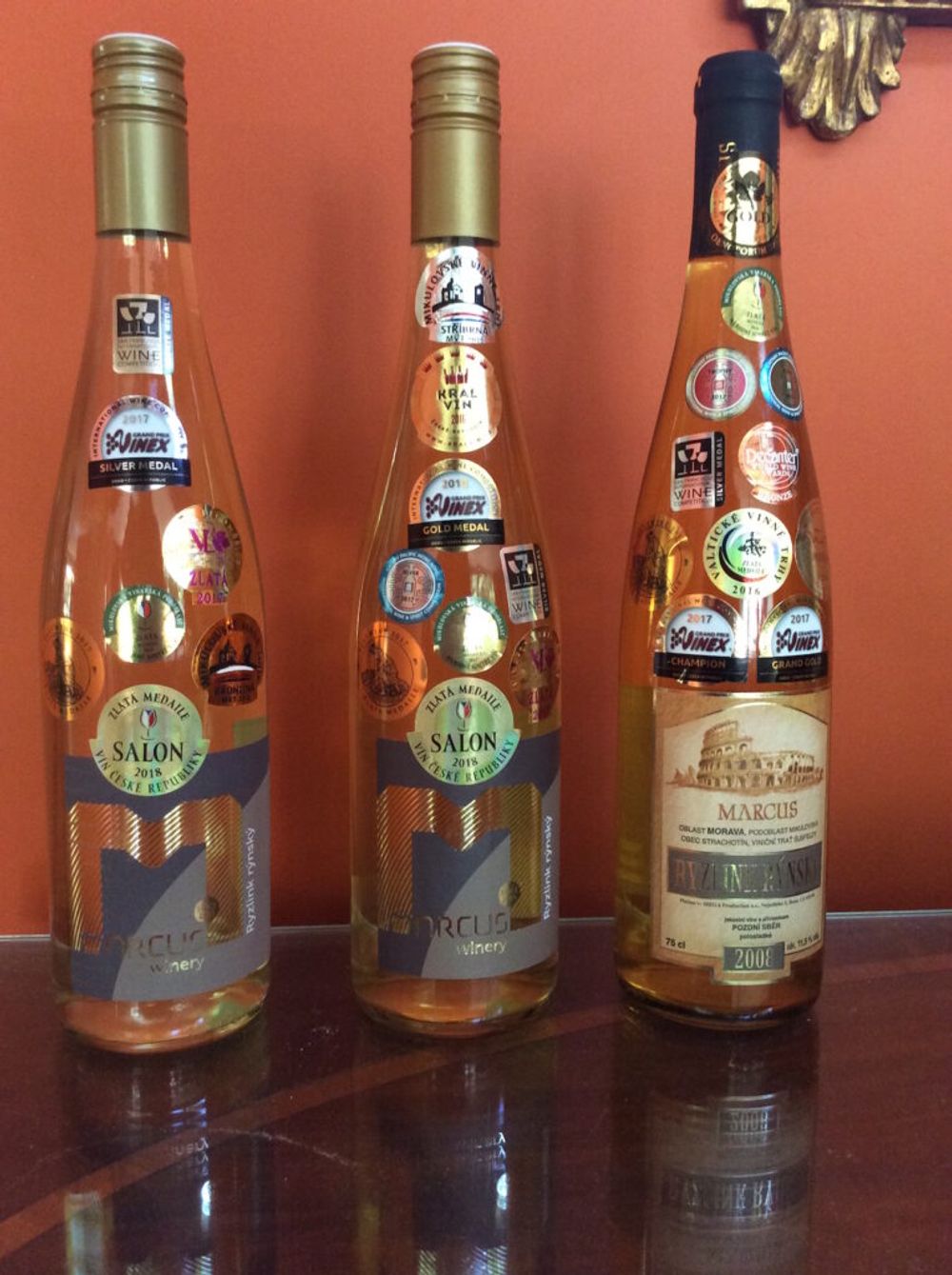
Marcus Wines: just a little bit proud of its many awards
For Cestimir Adamec of Marcus, a winery named after the Emperor Marcus Aurelius who reputedly established vineyards on the Moravian Plains where Adamec today makes his award-winning Riesling, this diversity is key to what makes the Czech wine industry so interesting.
“Many new varieties have been bred here and this can be a great way to differentiate from foreign competitors. Crossed varieties include André, Muscat Moravian, Cabernet Moravia, Aurelius and, Pálava, which has become particularly popular amongst domestic consumers,” Adamec says.
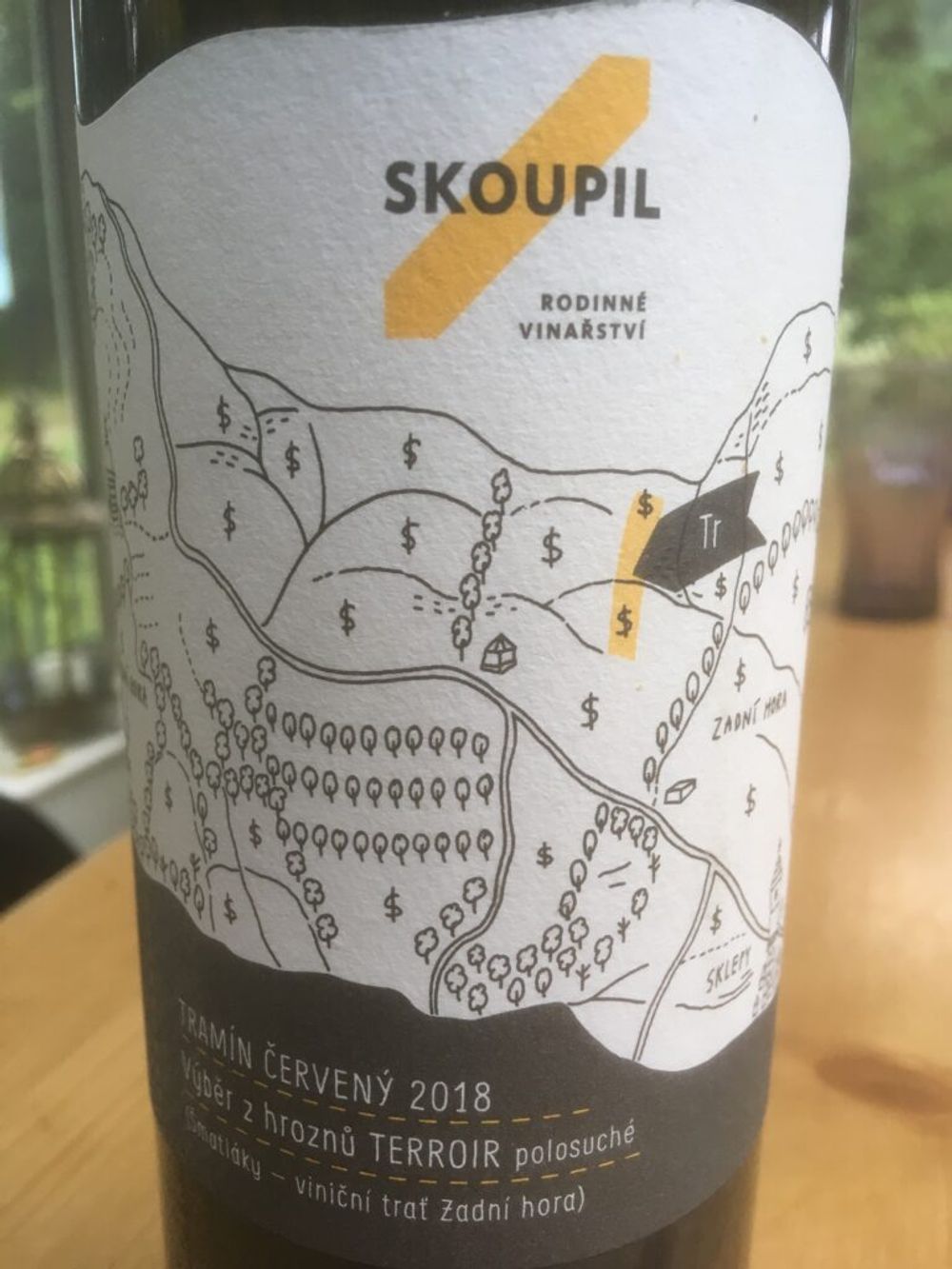
Contemporary labelling that highlights terroir
And, although most producers are focused on the home market, which is healthy, increasingly sophisticated labelling suggests a desire to reach further. And some of the labelling is quite impressive: some producers have gone very modern and eye-catching, like Skoupil, whose white label with a simple yellow stripe is eye-catchingly effective. Templarske Sklepy – the largest and oldest producer – has opted for impressive limited edition bottles embossed with the cross of the Knight’s Templar and labels designed to resemble old-fashioned books, closed by red seal (once opened they have full details of the wine and vintage) and in their Diamond range, black bottles with two imitation diamonds attached to the label.
BV Vinarstvi’s extensive range is labelled simply but attractively, a single stripe against a black label giving just the name of the variety and the vintage, with all the other information on the back. All in keeping with an increasingly modern industry, with white wines in particular respected for their quality.
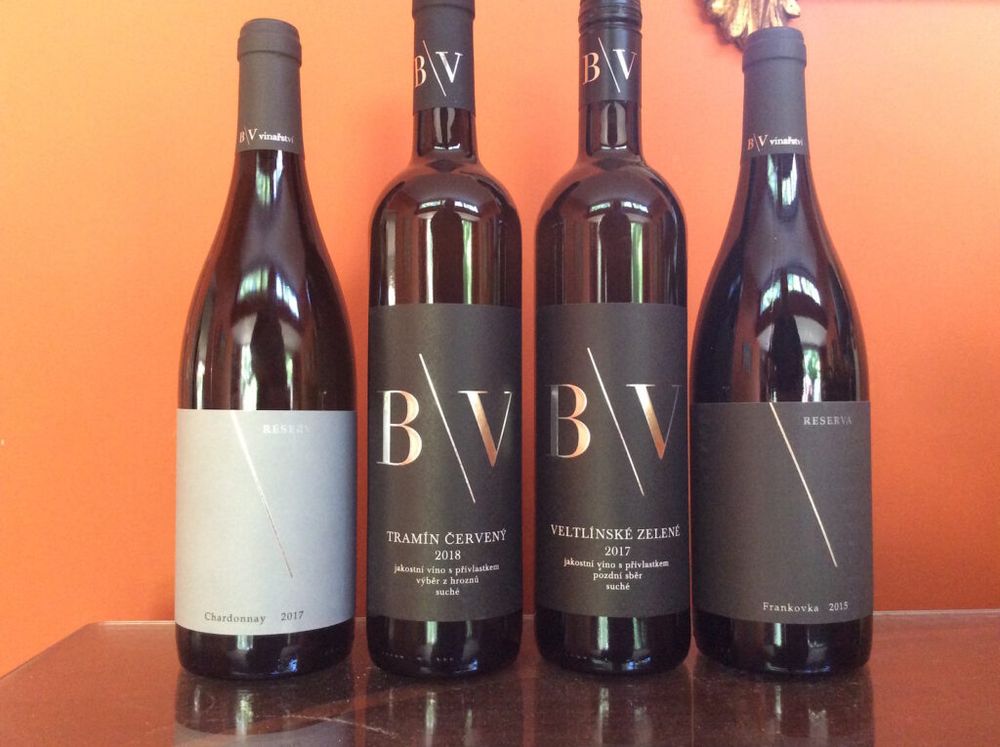
So what are the best varieties to look out for?
Welschriesling is clearly the variety that could get the Czech Republic onto the international wine map, in much the same way perhaps as Hungary’s wine industry has used Furmint to boost its reputation. Similarly Rhine Riesling here is solid, with new and older, more established producers making good examples, although sweet and semi-sweet examples remain quite common. Equally good is Pinot Blanc, known here as Rulandske Bile, generally made in a dry style. Red grapes now account for around 34% of plantings – up from 20% around 20 years ago – with Frankovka but also Pinot Noir doing very well in what basically remains a cool climate region. There are some interesting wines to be tried here.
But maybe it’s the hybrids that are the Czech Republic’s USP.
Some of the most exciting wines I have tried are from varieties that hardly slip off the tongue. BV’s Andre 2015 is a gold medal winner and I can see why; medium weight with good acidity and dark berry fruit this really gives hybrids a good name. The Cabernet Cortis from Spielberg, at 14%, is a full-on example of this hardy, dark-skinned German-bred grape developed first in 1982. This is very nice, brambly and dark blackcurrant flavours on the palate. And the award-winning white Pálava 2018 from the Sonberk winery is very moreish, rounded but with great fruit and acidity, yet quite distinct from anything I have tasted for a while.
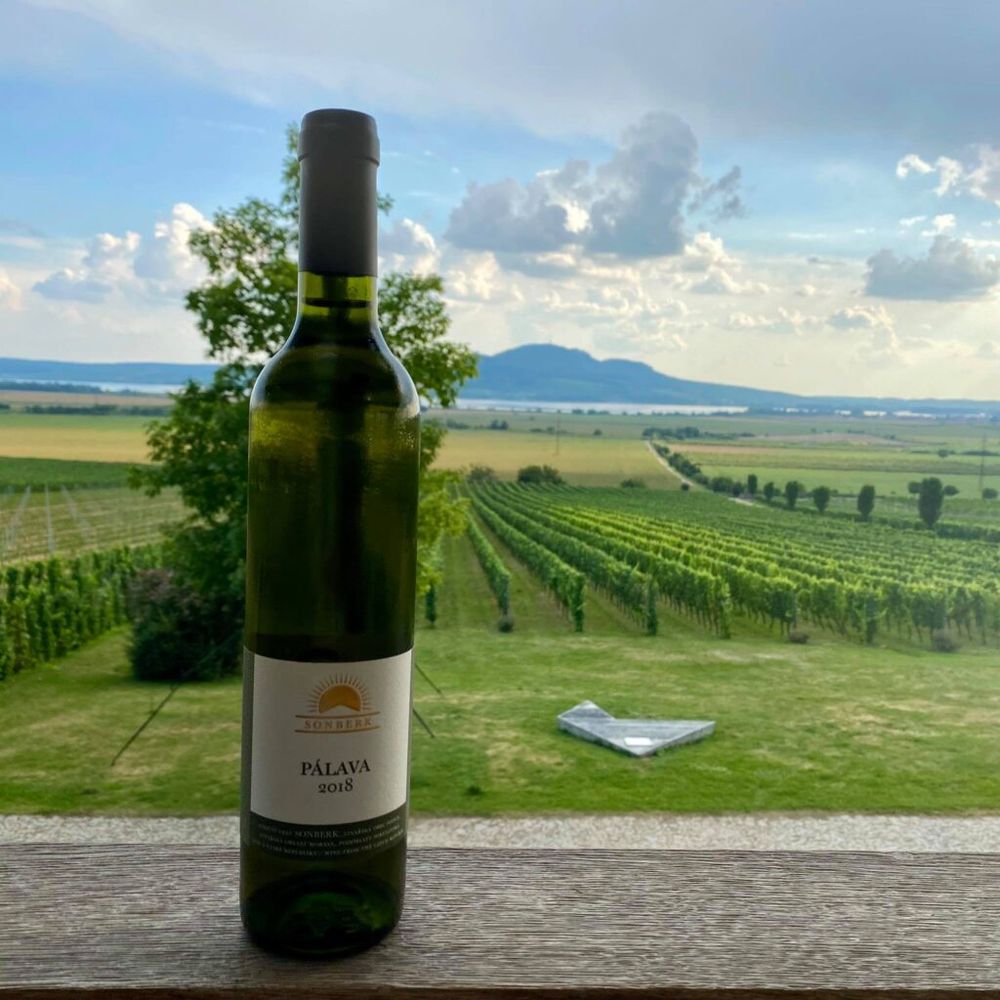
Sonberk’s sweet Pálava 2018 was given a Double Gold award at the American Finger Lakes International Wine Competition held this August
Over the last ten years, the UK trade – especially the on-trade – first discovered Austrian wine, with Grüner Veltliner but also Blaufränkisch and Zweigelt making their way onto lists and shelves. More recently we have taken Hungarian wine to heart, recognising the fantastic progress made by a number of key producers and the great attributes of such varieties as Furmint, Harslevelü and Kadarka. Might now be the time for another Central European country’s wine industry to break past its borders and gain wider recognition? I think it might be, as long as I can persuade Daniel – and the many others like him – to put the beer to one side.









































